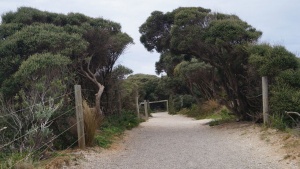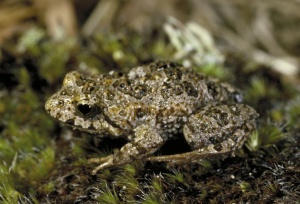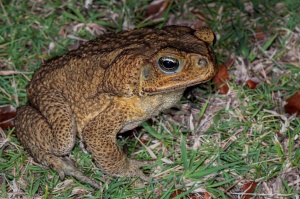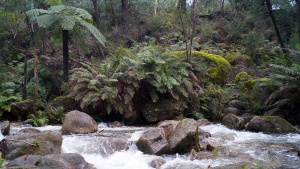Super User
Bellarine Peninsula - Barwon Coast & Ocean Grove Nature Reserve, VIC
The Bellarine Peninsula is located south-west of Melbourne in Victoria, surrounded by Port Phillip, Corio Bay, and Bass Strait. The Barwon Coast includes a landscape that includes Coastal Moonah Woodlands and wetlands with high environmental biodiversity and conservation values.
Australian National Botanic Gardens, ACT
The trail at the Australian National Botanic Gardens in Canberra is a fantastic way to engage with our living collection of Australian native plants and contribute to valuable research in protecting our native plant species.
Discover the trail and become citizen scientists in your own backyard. Look out for the signs marking the ClimateWatch plants. Information on the trail is also available at the Garden’s Visitor Centre.
ClimateWatch in Parks
Parks Victoria and Earthwatch Australia are partnering to help gather important knowledge about the effects of climate change. The partnership will bring park visitors, nature enthusiasts, students, contractors, park staff, and the general public together with climate change scientists through ClimateWatch; and connect schools and community groups to their parks and neighbourhoods.
ClimateWatch in Parks offers a great opportunity for students to conduct their own individual studies in controlled yet wild environments, while also contributing to national and international research into climate change and phenology.
Common Eastern Froglet
Ground-dwelling froglet with a slender body, slender limbs and slightly pointed head that is wider than long. The pupil is horizontal and the tympanum (eardrum) indistinct. Usually this frog is discernible by its distinctive ‘crick-crick’ call.
The Common Froglet has extremely variable markings, with great variety usually found within confined populations. The colour varies from dark brown, fawn, light and dark grey. The colour of the ventral surface is similar to the dorsal surface, but speckled with white spots. The dorsal surface may be smooth, warty or have longitudinal skin folds.
Cane Toad
Cane toads have tough, leathery skin with a distinctive warty appearance. Usually grey, brown, reddish-brown or yellow in colour with a pale underbelly. Pronounced bony ridge above nostril and venom-producing gland behind the ear (behind the eye).
Juveniles have smooth dark skin with darker blotches and bars. Cane toads sit upright and move in short rapid hops that can help distinguish them from other species. Average-sized adults are 10-15 cm long.
Cane Toad tadpoles are shiny black on top and have a plain dark belly with a short thin tail. They are smaller (less than 3.5 cm) and often gather in huge numbers in shallow waters.
Cane Toad eggs are laid in long strings of transparent jelly enclosing double trows of black eggs. The spawn tangles in dense masses around water plants.
Anakie Gorge, VIC
Start your walk from Anakie Gorge Picnic Area, entering from Gorge Road (unsealed road), Staughton Vale. Contribute to citizen science while exploring one of Melbourne's lesser known gorges.
BCCVL Species Distribution Models
ClimateWatch has worked with the Biodiversity and Climate Change Virtual Laboratory (BCCVL) in developing maps for the current, future and range-change predicted habitat suitability of over 100 terrestrial ClimateWatch indicator species.
Not all species monitored on the ClimateWatch program will have BCCVL species distribution models produced for them due to limited occurrence data and limited climate/environmental data for marine species.
First sub-alpine ClimateWatch Trail
The Earthwatch team have been busy delivering new ClimateWatch monitoring trails across Australia in 2019, including the first sub-alpine ClimateWatch trail at Mount Buffalo National Park in Victoria.
Mt Buffalo has high vegetation biodiversity. It's sensitive, sub-alpine grassland and woodland plant communities are at high risk from the impacts of climate change and pest species.
Contribute to climate change & COVID-19 research from home during lockdown
Being cooped up inside, either self-isolating or working from home, can make many of us feel anxious and stir-crazy. Research shows how good being out in nature is for our mental health, but it's important to listen to the current public health guidelines and stay home where required. If you have some natural spaces close to your home, we have created a ClimateWatch guideline for physical distancing:
IPCC Special Report on Global Warming
In 2018 the Intergovernmental Panel on Climate Change (IPCC) released its 1.5°C Special Report which reinforced the huge risks of global warming above 1.5°C, leading to widespread calls for greater climate action.
The IPCC Special Report shows the impacts of global warming of 1.5 °C above pre-industrial levels and related global greenhouse gas emission pathways, in the context of strengthening the global response to the threat of climate change, sustainable development, and efforts to eradicate poverty.
The differences between holding global warming to 1.5°C as opposed to 2°C are illustrated in a World Resources Institute infographic below.











